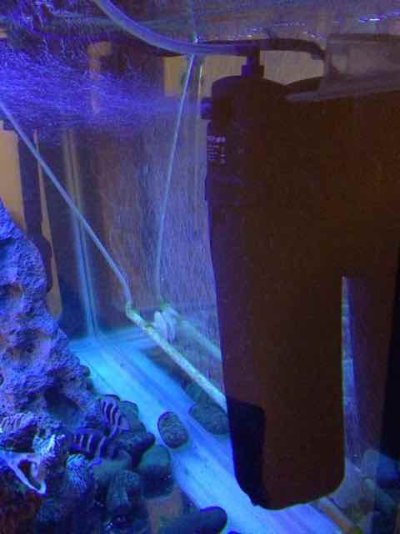jenelle
Aquarium Advice Activist
Hi everyone, I got home from an almost 2 week vacation and the bits of algae I had been battling had turned into a disaster of blue-green algae (my house-sitter was feeding, but not cleaning tank.) I also noticed a small red sore on one of my cories.
I did a massive clean, invested in a canister filter to improve water flow, cut back on feeding, decreased lighting, and still I see the cyano creeping back very quickly.
After much debate and research (with no clear answers), tonight I dosed the tank with Erythromycin after removing the carbon from the filter. My tank is about a year old.
Now I'm stressing about the beneficial bacteria that may be wiped out (will be, won't be - there are a zillion different answers on the net). The package recommends 2 doses in 2 days, then 25% water change, then 2 more doses in 2 days before 50% water change and putting back the carbon. Does this sound like overkill to you? Should I just do the first two days of doses seeing as I've removed 90% of the cyanobacteria? Or does that actually increase the risk of it bouncing back on me? On the other hand, if I only do 2 days, then maybe my BB will be saved.
Has anyone used Erythromycin and what has been the effect on your BB?
Thanks!!
I did a massive clean, invested in a canister filter to improve water flow, cut back on feeding, decreased lighting, and still I see the cyano creeping back very quickly.
After much debate and research (with no clear answers), tonight I dosed the tank with Erythromycin after removing the carbon from the filter. My tank is about a year old.
Now I'm stressing about the beneficial bacteria that may be wiped out (will be, won't be - there are a zillion different answers on the net). The package recommends 2 doses in 2 days, then 25% water change, then 2 more doses in 2 days before 50% water change and putting back the carbon. Does this sound like overkill to you? Should I just do the first two days of doses seeing as I've removed 90% of the cyanobacteria? Or does that actually increase the risk of it bouncing back on me? On the other hand, if I only do 2 days, then maybe my BB will be saved.
Has anyone used Erythromycin and what has been the effect on your BB?
Thanks!!

